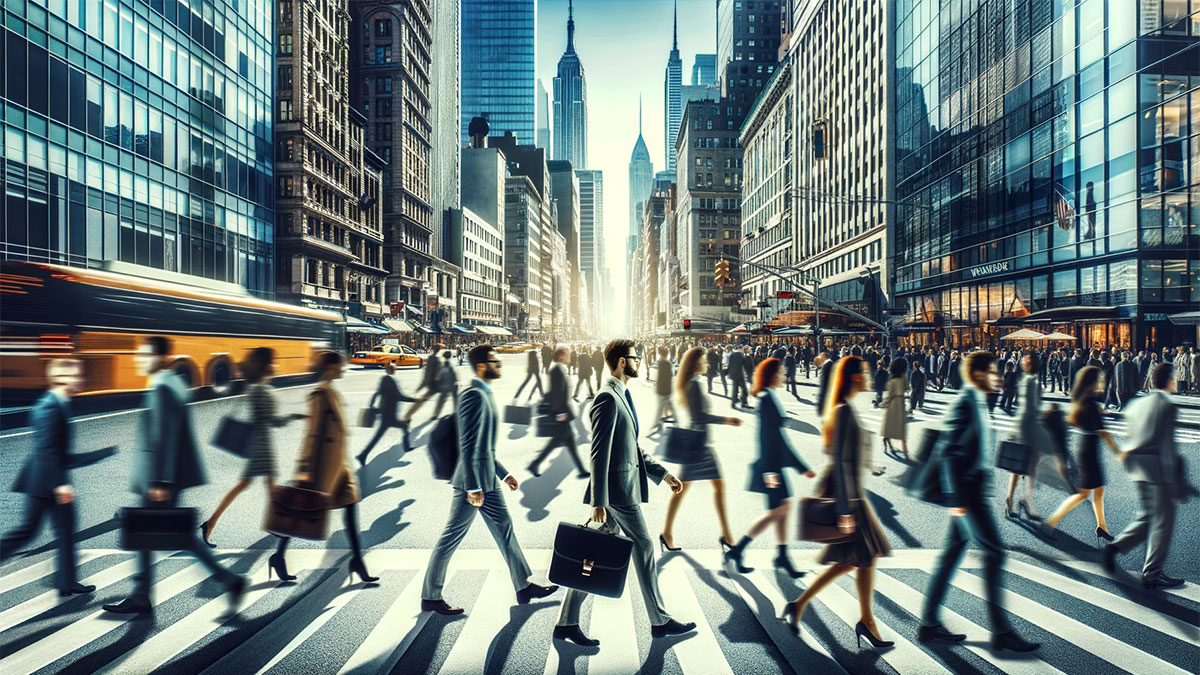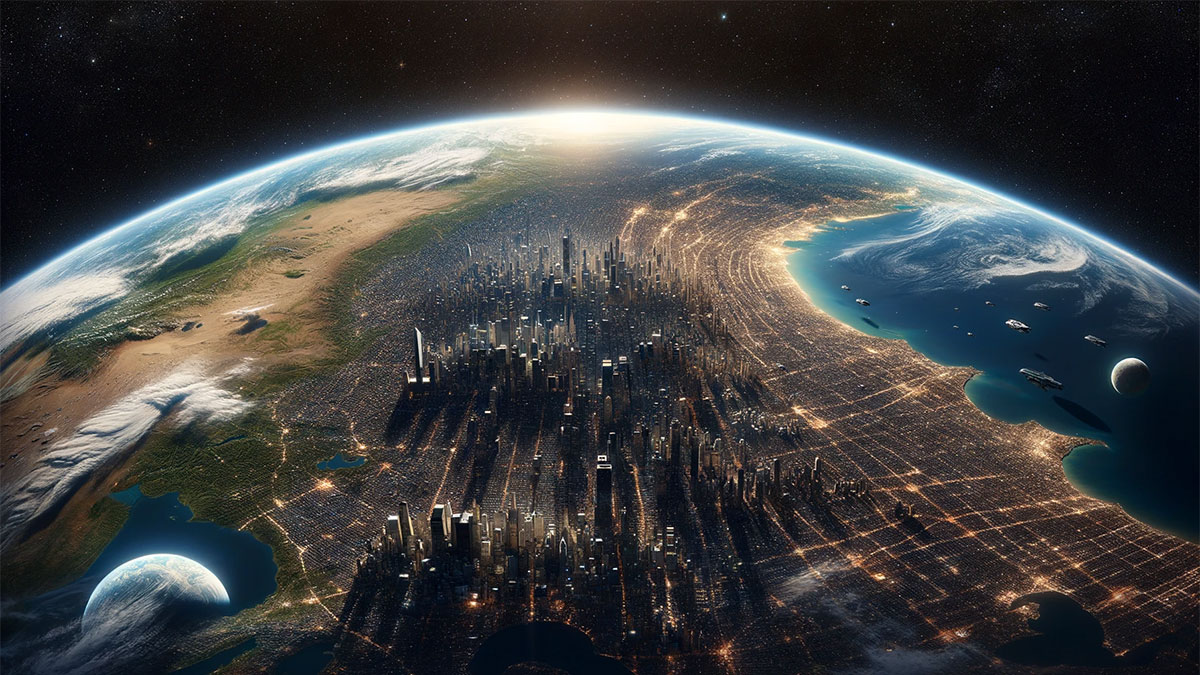Envisioning a world where the entire Earth is as densely populated as Manhattan offers a unique perspective on urban living and its global implications. Manhattan, with its high density of about 71,225 people per square mile, stands as a model for extreme urbanization.
If the entire Earth’s land area, approximately 57.51 million square miles, was as densely populated as Manhattan, the total global population would soar to an astounding 4.10 trillion people. This far exceeds the current world population of 7.9 billion and presents a scenario far beyond our current urban experiences.
| Metric | Value |
|---|---|
| Current World Population | 7.9 billion |
| Manhattan Population Density | 71,225 people/mile² |
| Total Land Area | 57.51 million mi² |
| World’s Capacity at Manhattan Density | 4.10 trillion |
| Percentage of Land Used | ~0.017% |
Population density, defined as the number of people living in a particular area per square mile or kilometer, plays a crucial role in shaping our societies and environments. High population density, while leading to challenges like overcrowding, traffic congestion, and pollution, also fosters vibrant economies, cultural diversity, and strong community bonds. Manhattan, as one of the most densely populated areas on Earth, exemplifies both the challenges and benefits of high-density living.
In exploring high population density, Manhattan is not alone. Other areas like Hong Kong, Singapore, and Mumbai also grapple with the challenges and opportunities of dense urbanization. These regions offer critical insights into managing limited space, resources, and community dynamics in densely populated environments.
Key Takeaways
- Applying Manhattan’s population density globally would result in an estimated 4.10 trillion people, highlighting extreme challenges in resource management and urban sustainability.
- Manhattan, with its high population density, offers critical insights into the benefits and difficulties of densely populated urban environments.
- Comparative studies of other densely populated areas like Hong Kong, Singapore, and Mumbai provide diverse perspectives on managing high-density living spaces.
Understanding Population Density
Population density refers to the number of individuals living in a specific area, typically measured per square mile or kilometer. In densely populated areas, the high concentration of people often leads to shared resources, such as land, water, and food, posing both challenges and opportunities for community development.
Manhattan, with a population density of around 71,225 people per square mile, provides a vivid example of the potential and difficulties of high-density urban areas. Applying Manhattan’s density to the entire Earth would result in a hypothetical global population of about 4.10 trillion, a scenario that underscores the importance of sustainable development and resource management.
While an intriguing thought experiment, such a densely populated Earth is not feasible for practical and ecological reasons. The Earth’s resources and environmental capacity would be insufficient to support such a large population. Therefore, it is vital to balance population growth with sustainable development to ensure a healthy and prosperous future for all.
Manhattan: A Case Study
Manhattan, the most densely populated borough of New York City, is an insightful case study for examining the implications of high population density. With an estimated population of around 1.6 million in 2023, living in an area of just 23 square miles, it highlights the complexities of urban living.
Manhattan’s high population density, coupled with a relatively low rate of owner-occupied housing and high median household income, paints a unique picture of urban life. It offers a glimpse into the challenges and amenities that come with densely populated areas, including housing costs, infrastructure demands, and cultural vibrancy.
Global Population Density Comparison
Population density varies significantly across the globe. While some regions like Singapore, Hong Kong, and Monaco are characterized by high population densities, others like Mongolia, Australia, and Russia experience much lower densities. These variations in population density impact each area’s social, economic, and environmental landscape.
In densely populated areas, issues like resource allocation and environmental sustainability become increasingly crucial. This global perspective underscores the need for understanding and managing population density to ensure harmonious and sustainable living conditions worldwide.
Implications of High Population Density
High population density brings a mix of challenges and benefits. In dense urban areas like Manhattan, the concentration of people can strain housing, infrastructure, and resources, leading to issues like pollution and competition for space.
However, it also fosters economic growth, cultural exchange, and innovation. Understanding these dynamics is essential for effective urban planning and policy-making, aiming to maximize the benefits while mitigating the challenges of densely populated environments.
Population Composition and Diversity
Manhattan’s diverse demographic composition, with a mix of races, ethnicities, and nationalities, reflects the potential diversity of a highly populated Earth.
The variety in demographic makeup contributes to the cultural richness and social complexity of densely populated areas. This diversity, while offering a wealth of cultural experiences, also presents challenges in ensuring equitable access to resources and opportunities for all community members.
Highly Densely Populated Urban Regions
In exploring the dynamics of urban density, it’s essential to look beyond entire cities and focus on specific regions that epitomize the challenges and opportunities of living in extremely dense environments. These pockets of intense urbanization, often condensed
When compared to some of the world’s most densely populated urban regions, Manhattan’s high population density appears almost moderate, revealing a diverse global landscape of urban living.
Dharavi, Mumbai, India
Population Density: Exceeding 280,000 people per square mile in some parts.
Dharavi, often cited as one of the largest slums in Asia, is a highly dense region in Mumbai, India. Despite its small area, it is home to a vast number of people, living in close-knit communities. This area exemplifies high-density living with challenges such as limited access to resources and infrastructural constraints, yet it also showcases a strong sense of community and entrepreneurial spirit.
Mong Kok, Hong Kong
Population Density: Approximately 340,000 people per square mile.
Mong Kok, a region in Hong Kong, is known for its bustling streets, vibrant markets, and high-rise residential buildings. It stands as one of the most densely populated areas in the world. The region is a hub of commercial and residential activity, highlighting the possibilities and challenges of extreme urban density.
Barangay San Antonio, Manila, Philippines
Population Density: Around 180,000 people per square mile.
Barangay San Antonio, located in the Pasig area of Metro Manila, is one of the most densely populated regions in the Philippines. It epitomizes the challenges of urban living in a densely packed environment, where space is at a premium, and community life is intensely local.
Santa Cruz, Mumbai, India
Population Density: Exceeding 55,000 people per square mile.
Santa Cruz, another region in Mumbai, is characterized by its dense residential and commercial areas. This region, while not as densely populated as Dharavi, still faces similar challenges with high population density, such as overcrowding and resource management, but also benefits from vibrant cultural and economic activities.
Gulberg, Lahore, Pakistan
Population Density: Approximately 52,000 people per square mile.
Gulberg in Lahore, Pakistan, is known for its commercial importance and high population density. It combines residential, commercial, and cultural spaces, making it a bustling and vibrant part of the city. Despite the challenges of density, Gulberg remains a key economic and cultural hub in Lahore.
These regions, each with their unique characteristics and challenges, provide a diverse perspective on living in extremely densely populated environments. They offer insights into how different communities adapt to and manage the complexities of high-density urban life.


